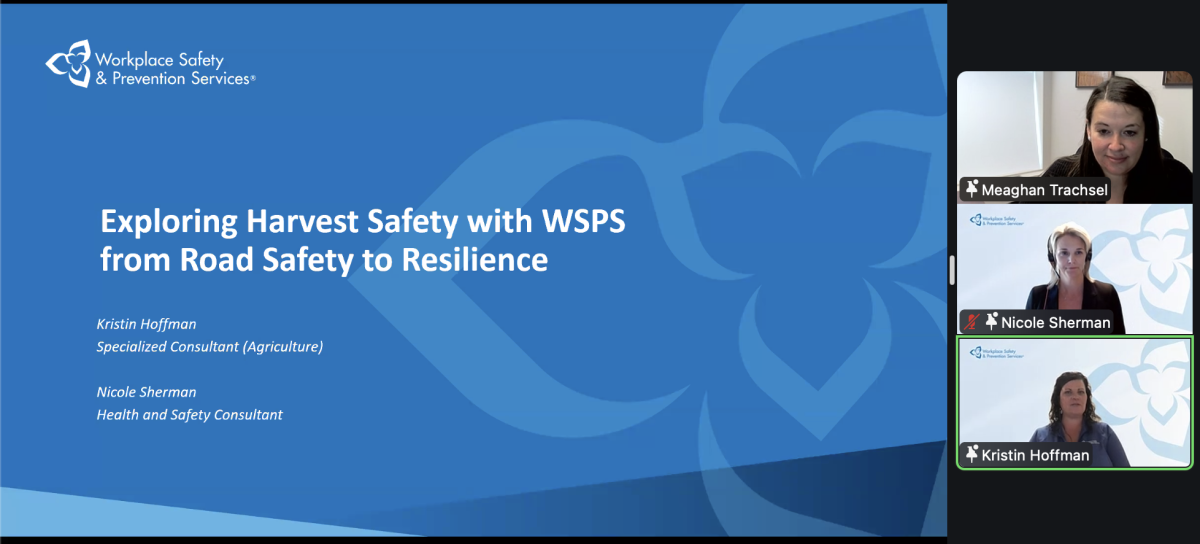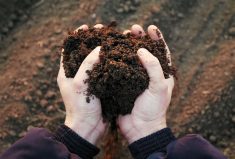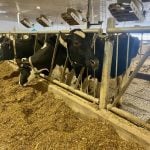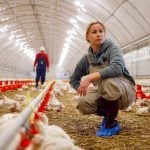(Resource News International) — Declining U.S. hay acreage will provide greater export opportunities for Canadian producers in the upcoming 2008-09 crop year, with prices expected to firm, according to industry sources.
Hay acreage in the U.S. for 2008-09 was pegged in the March 31 U.S. Department of Agriculture prospective plantings report at 60.6 million acres, down two per cent from the previous year’s level as producers choose instead to plant grains and oilseeds promising attractive prices.
“The whole forage sector is undergoing changes right now due to the increased price of crops such as corn, soybeans and wheat. Farmers are more and more interested in that type of production to the detriment of forage production,” said Remo Pasteris, an agronomist with Agriculture and Agri-Food Canada in Ottawa.
Read Also

Exploring Harvest Safety
Kristin Hoffman of WSPS explains measures for increased farm safety around harvest season
The U.S. is already an important destination for Canadian hay, second only to Japan in terms of demand. In 2006, for example, the U.S. imported $32.5 million worth of hay and forage products, accounting for 19 per cent of Canada’s export market that year. The major forage product sold there is timothy hay destined for the equine market, according to Pasteris. Other important exports include alfalfa and mixed hay.
Pasteris is also optimistic about the possibility of new markets opening up for Canadian forage.
“There seems to be a good opportunity right now for Canada to move into the world market for forage,” Pasteris said. “In Middle Eastern countries they were doing a lot of irrigation with ground water but they’re moving away from that process because they’re finding they just can’t continue to deplete their ground water. As a result, I’m expecting their forage production will decrease which would open opportunities for us,” he said.
In the near term, dry weather in Australia and parts of Europe, such as Spain, may also open doors, he said.
Of course, the dynamics expected to increase export opportunities for Canadian producers will be the same ones that may limit Canadian production and thus lower the amount of forage available for foreign sales.
Pressure from other crops
Pasteris didn’t want to speculate as to how
much land Canadian farmers will seed to forage this coming spring, but did acknowledge hearing from various sources that Canadian producers are likely to be swayed this year by crops such as canola and wheat.
“The profitability of wheat and canola production is putting pressure on the whole forage industry right now, but then again not every producer is equipped to produce grains,” he said. “Not all lands are rich enough to produce them so there may be opportunities for better land management in areas where forage can be produced.”
Increased interest in forage acreage has also been shown recently by the beef industry, he said, as farmers look for ways to maximize their production at a time when their feed costs have skyrocketed.
Canadian production levels in 2008-09 will also depend on weather.
“The forage industry is very weather-dependent. If you get just the right amount of rain you can have a good crop but if you get a dry summer, naturally production will decrease,” he said. “The moisture content matters as well, especially for hay. You may have excellent quality hay and then it rains and the quality declines. There goes your export opportunity.
“It’s a very difficult market in terms of specifications. Hay has to be well dried with little dust on it, with low weed content and if it rains then you’ve lost that market. It is a challenge to produce to good forage,” he admitted.
In any event, hay prices are expected to firm in the coming crop year.
Ed Shaw, president of International Quality Forage and Feed based in Carstairs, Alta., said, “Where the price are going next year is speculative but I think they’ve got to go up. There is quite a bit of acreage that has been taken out of forage production to chase this biofuel craze of wheat, corn, and canola. Demand for horse hay is increasing and supply is going to decrease so that tells me that the price has to go up.”
Prices up
Shaw said the old-crop Alberta farm gate price for small, square, 14-inch format timothy bales sold into the U.S. equine market ranges from $180 to $200 per tonne. The Alberta farm gate price for mixed hay ranges from $140 to $150 per tonne, while the price for alfalfa ranges from $120 to $150 per tonne. Prices for 16-inch format bales would be roughly $20 per tonne less, he said.
The prices, Shaw said, are up from those seen during the 2006-07 crop year.
Moving further out, Pasteris is optimistic about the possibilities still in store for Canadian forage producers. The biggest opportunity is likely to come from the biofuel industry. The hope is that at some point forage will take the place of other feedstocks as a main ingredient in the production of ethanol, thus helping to alleviating food inflation pressures. Research into the production of cellulosic ethanol, which would be essential to the use of forage, is well underway.
“I expect to see upward pressure on prices so that in the future it will become profitable for farmers to use forages maybe not as the number one export off the farm but as an add-on. In the future it may be case that extra hay will be going somewhere else rather than just to the neighbour down the road.”














